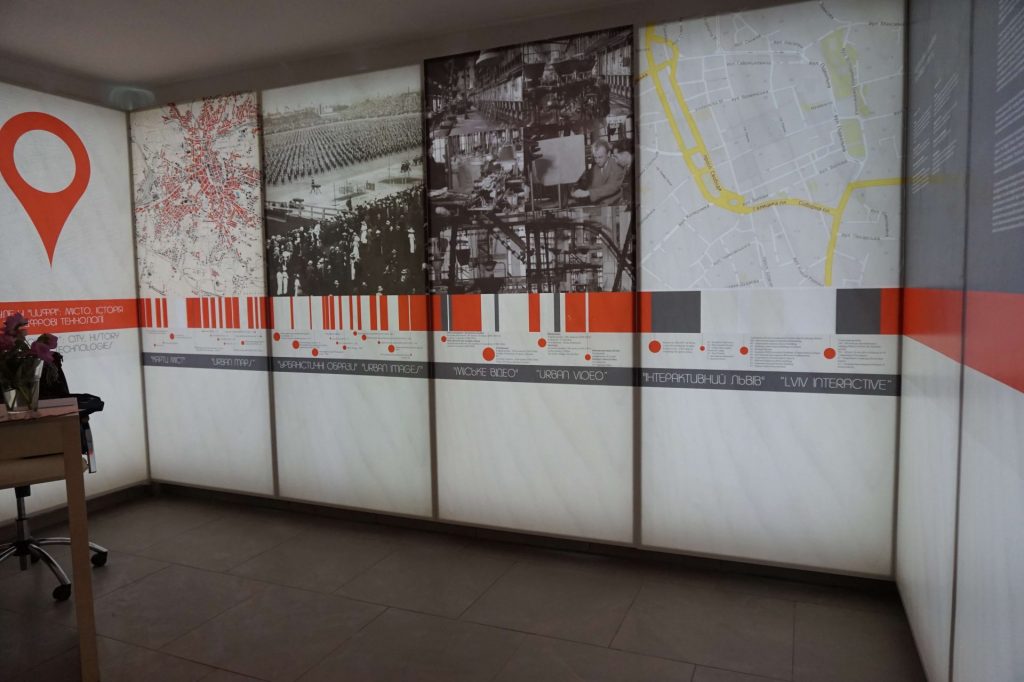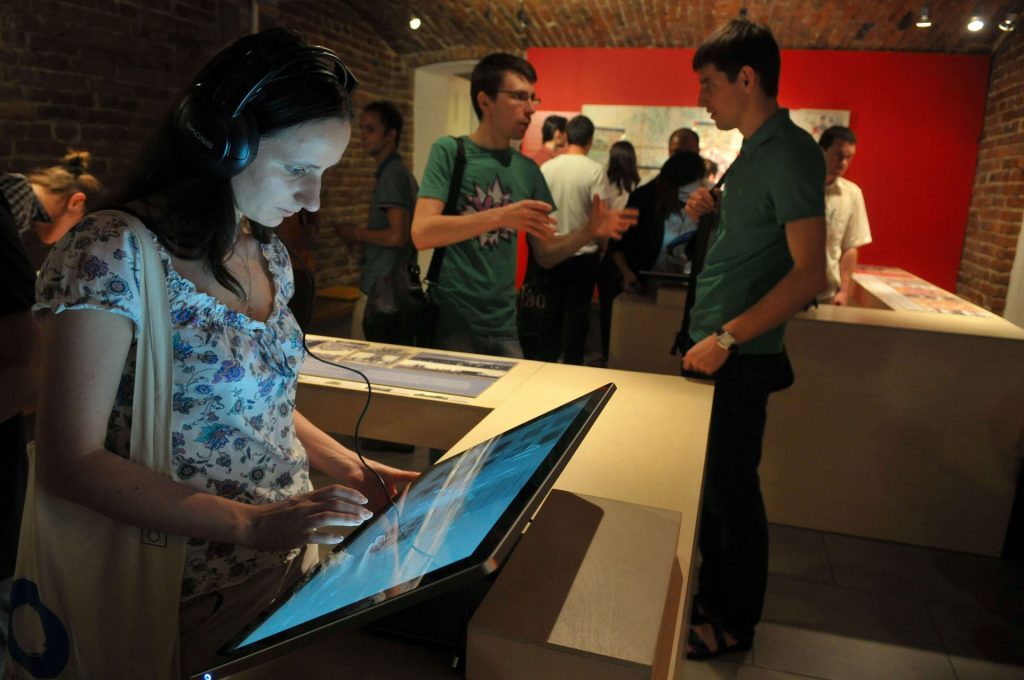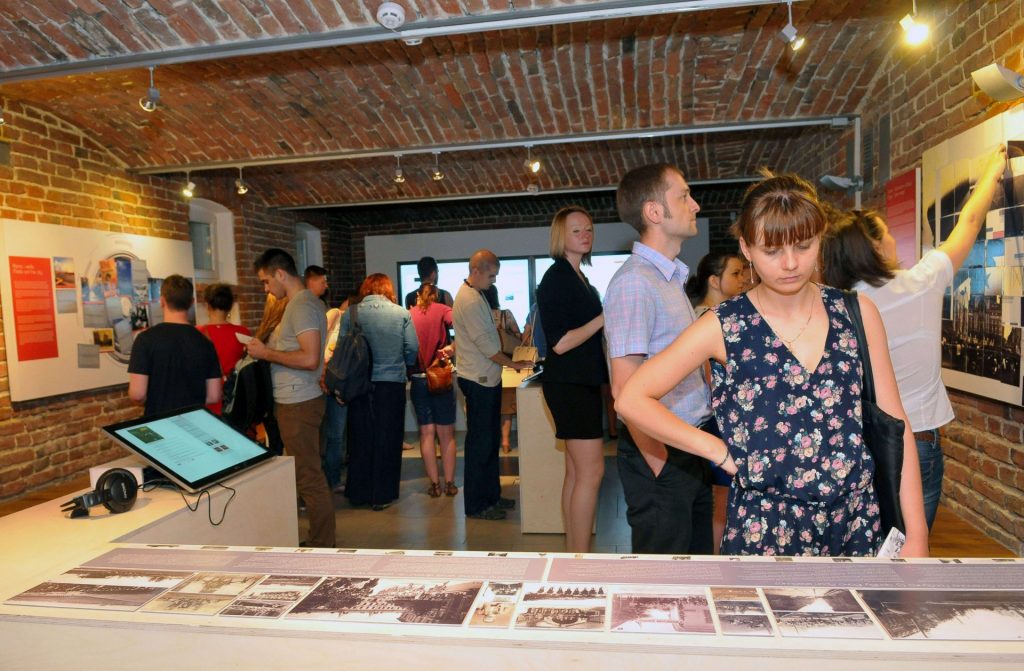The Past in "Digital": The City, History, and Digital Technology
June - October 2014
Exhibition Hall, Center for Urban History
Interactivity is a key feature of the Center for Urban History’s new exhibition. The center’s digital historical projects that make up the exhibition were presented on multimedia devices with touch screens and allow users to learn about the researchers' findings, to "touch" history. Along with digital gadgets, we also used the standard tools for historical research, such as the library’s card catalog and old city maps.
The exhibition was created in the form of public history, which means it aims to promote the past, increase the public's interest in historical facts and events, and build awareness of the importance of the historical context of the past.
In modern society, the amount of information available is radically and steadily growing – in different media and in different spheres of life. Copying, disseminating, and studying large databases are already part of our daily lives. Moreover, not only has the amount of information available changed, but its character has often become defined by the extensive use of visual materials and visualization.
Over the last several years the Center for Urban History has been implementing projects at the intersection of "traditional" and "digital" history. Above all these are projects that are available online to the public. "Interactive Lviv" focuses on Lviv and the database "Urban Media Archive" includes "Urban Image", "Urban Maps", "Urban Video", and "My Stories". The exhibition "The Past in "Digital": The City, History, and Digital Technology" is the presentation and results of our digital projects that link urban history, visual materials, and digital technology.
In the exhibition we explained our projects and consider them in the context of large-scale and global changes that digital technology has brought to our perception of the past. Can we talk only about quantitative and illustrative changes? Can such changes lead to new ways of analyzing and understanding the past? For us it is important to show the features of work with "digital" and "digitized" sources compared to the more traditional "material". What does this means for historical research in general and urban history in particular? How does this affect the public perception of the past, especially in popular formats, but also for public history? We also raised the question of the role of historians and activists non-historians in the formation of knowledge and reflection of the past for the public. By asking these questions we looked at examples and challenges both in Ukraine and abroad.



